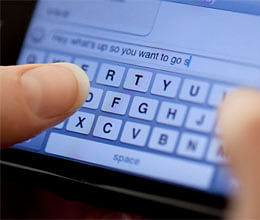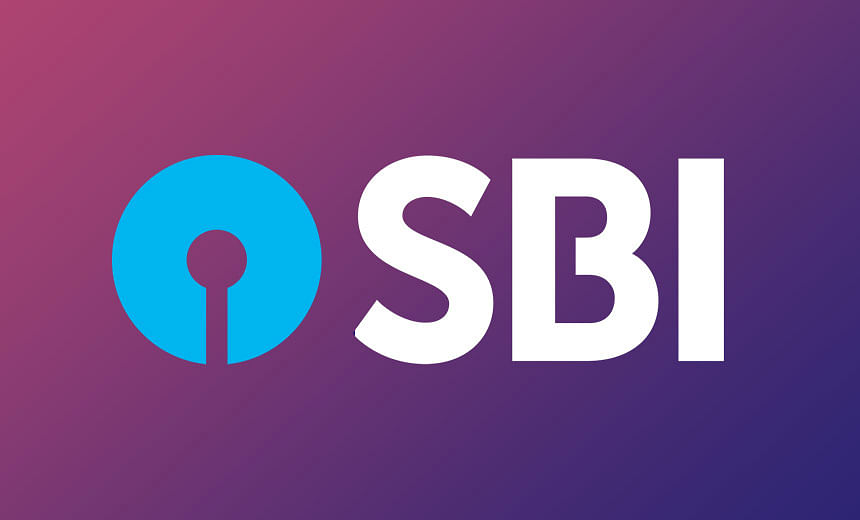
Texting just got a lot easier! Researchers claim to have developed a new keyboard for touchscreens that allows superfast thumb-typing, enabling you to type 34 per cent faster than on a QWERTY layout.
The research team used computational optimisation techniques in conjunction with a model of thumb movement to search among millions of potential layouts before identifying one that yields superior performance.
Typing on today's mobile phones and tablets is needlessly slow. One limitation is that the QWERTY layout is ill-suited for tablets and other touchscreen devices when typing with the thumbs, researchers said.
Thumb typing is also ergonomically very different from typing on a physical keyboard.
Researchers said it has been established that normal users using a QWERTY on a touchscreen device are limited to typing at a rate of around 20 words per minute, which is slow compared to the rates achieved on physical keyboards.
The researchers from the Max Planck Institute for Informatics and colleagues from the University of St Andrews and Montana Tech initiated the process to develop a layout for two-thumb text entry with the goal of improving typing performance and minimising the strain for the thumbs.
"The key to optimising a keyboard for two thumbs is to minimise long sequences with a single thumb," lead researcher Antti Oulasvirta said.
"We also want to place frequently used letters centrally close to each other. Experienced typists move their thumbs simultaneously: While one is typing, the other is approaching its next target. We derived a predictive model of this behaviour for the optimisation method," said Oulasvirta.
The computational optimisation process had two goals: To minimise the moving time of the thumbs and to approximate alternating sides as well as possible.
In the new keyboard KALQ, all vowels, with the exception of the letter "y" are placed in the area for the right thumb, whereas the left thumb gets assigned more keys.
To fully benefit from this layout, the users were trained to move their thumbs simultaneously. While one thumb is typing, the other one can move to its next target.
Finally, researchers developed probabilistic error correction methods that took into account how thumbs move and also statistical knowledge about the texts users type.
With these improvements, users were able to reach 37 words per minute, which is the best ever reported for two-thumb typing on touchscreen devices, significantly more than the approximate 20 words on a split QWERTY for regular users.
Researchers said KALQ will be made available as a free app for Android-based smartphones at the beginning of May.
The research team used computational optimisation techniques in conjunction with a model of thumb movement to search among millions of potential layouts before identifying one that yields superior performance.
Typing on today's mobile phones and tablets is needlessly slow. One limitation is that the QWERTY layout is ill-suited for tablets and other touchscreen devices when typing with the thumbs, researchers said.
Thumb typing is also ergonomically very different from typing on a physical keyboard.
Researchers said it has been established that normal users using a QWERTY on a touchscreen device are limited to typing at a rate of around 20 words per minute, which is slow compared to the rates achieved on physical keyboards.
The researchers from the Max Planck Institute for Informatics and colleagues from the University of St Andrews and Montana Tech initiated the process to develop a layout for two-thumb text entry with the goal of improving typing performance and minimising the strain for the thumbs.
"The key to optimising a keyboard for two thumbs is to minimise long sequences with a single thumb," lead researcher Antti Oulasvirta said.
"We also want to place frequently used letters centrally close to each other. Experienced typists move their thumbs simultaneously: While one is typing, the other is approaching its next target. We derived a predictive model of this behaviour for the optimisation method," said Oulasvirta.
The computational optimisation process had two goals: To minimise the moving time of the thumbs and to approximate alternating sides as well as possible.
In the new keyboard KALQ, all vowels, with the exception of the letter "y" are placed in the area for the right thumb, whereas the left thumb gets assigned more keys.
To fully benefit from this layout, the users were trained to move their thumbs simultaneously. While one thumb is typing, the other one can move to its next target.
Finally, researchers developed probabilistic error correction methods that took into account how thumbs move and also statistical knowledge about the texts users type.
With these improvements, users were able to reach 37 words per minute, which is the best ever reported for two-thumb typing on touchscreen devices, significantly more than the approximate 20 words on a split QWERTY for regular users.
Researchers said KALQ will be made available as a free app for Android-based smartphones at the beginning of May.








